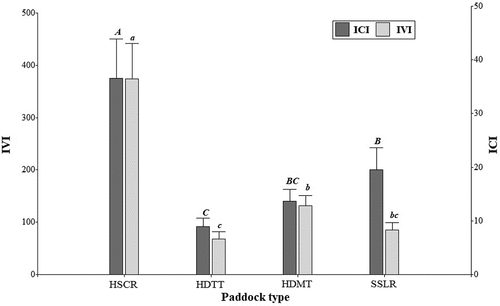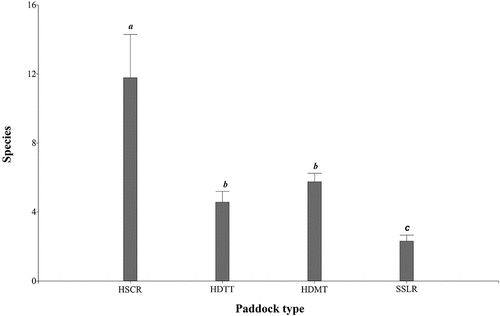Figures & data
Table 1. Main characteristics of the 12 farms selected for paddock composition and structure sampling.
Table 2. Calculation of paddock structural characteristics.
Figure 1. Conceptual model of paddock system typology based on tree composition, diversity, and structure.
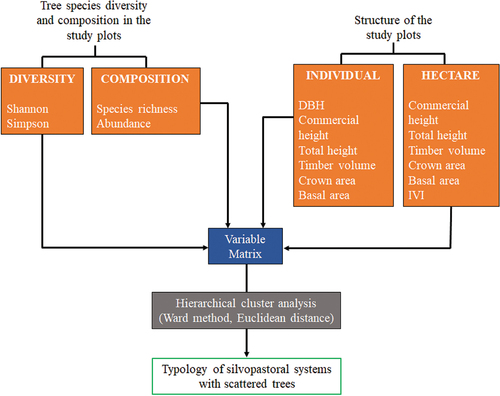
Table 3. Importance Value Index (IVI) computed for the tree species found in the paddocks, based on relative abundance RA (%), relative dominance RD (%) and relative frequency RF (%).
Figure 2. Sample-size-based rarefaction (solid lines). The 95% confidence intervals (gray-shaded regions) were obtained by a bootstrap method based on 1000 replications. The expected coverage for the sampling effort in the study paddocks was 99%.
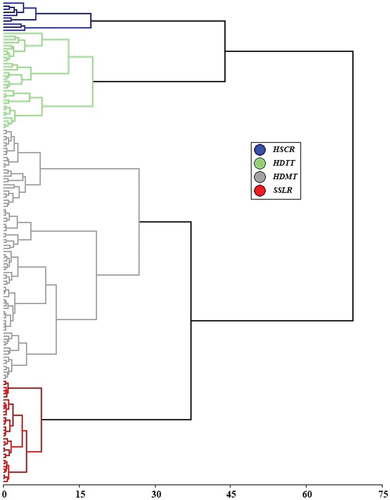
Table 4. Tree species composing 80% of cumulative abundance in each silvopastoral typology in livestock farms under the dual-purpose system in the humid Amazonian tropic of Colombia.
Table 5. Description of identified types, according to the used variables of composition, diversity, and structure.
Figure 3. Biplot constructed with structure and diversity variables: Species richness (Sp), Abundance (Ab), Shannon diversity (Sd), Simpson diversity (Simd), Diameter at Breast Height (DBH), Commercial height (Ch), Total height (Th), Timber volume per individual (TvInd) Timber volume per ha (TvHa), Canopy area per tree (CaInd), Basal area per individual (BaInd) and Basal area per hectare (BaHa), Tree density (IndHa), Canopy area per hectare (CaHa), Tree cover (TC), Importance Value Index (IVI). The plot shows the four paddock condition types identified: HSCR: High structural complexity and highest tree species richness, HDTT: High species diversity and tall trees, HDMT: High species diversity and medium-sized trees and SSLR: Structurally simple with lowest species richness.
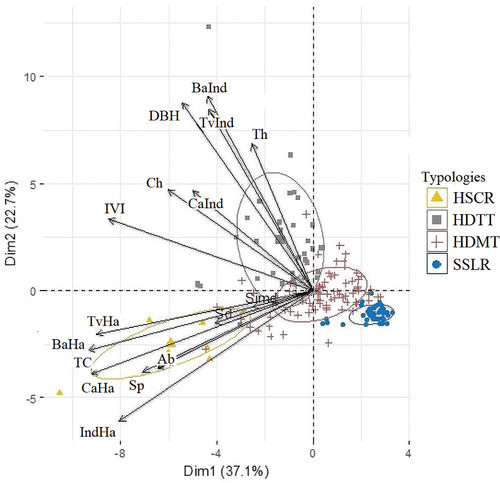
Table 6. Provision of goods and ES recognized by 48 interviewed farmers for the main tree species (ordered according to their relative frequency) in the study livestock farms.
Table 7. ES weight average per hectare based on average number of trees and basal area of the tree species occurring in the paddock type.
Figure 5. Relationship between the Index of Cultural Importance (ICI) and the Importance Value Index (IVI) in the four paddock condition types (HSCR= High structural complexity and highest tree species richness; HDTT= High species diversity and tall trees; HDMT= High species diversity and medium-sized trees; SSLR= Structurally simple with lowest species richness. Different letters indicate differences among means for IVI (capital letters) and for ICI (small letters) at p< 0.05.
